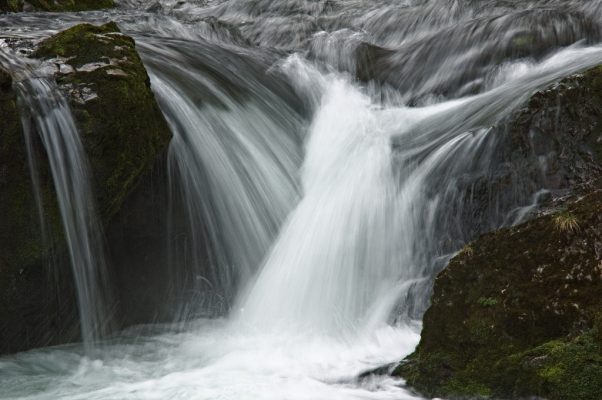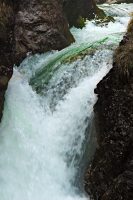
recently i had discussions with colleagues of the local photo group about moving water in photography. there are obviously two fractions: flow haters aka. freeze lovers and soft flow lovers. whilst the latter enjoy the extension to the human eye in form of the camera’s ability to show the movement of the water, the first party bluntly rejects such pictures. for me, both forms of rendering are valid but I do enjoy very much the flow, expressing a distinct feeling of time passing, energy coming and dissipating and offering the eyes and the soul a place to dive in, melt in and re-unite with nature.
the little Weißbach canyon becomes more and more a place of rest and regeneration for me, and capturing the stimulation of all senses in a photography is an everlasting challenge.
the image to the right is a crisp rendering of a spot nearby, strong more in the colors and in the v-shaped direction of the falling waters.

Hmm … of course I have been through the Radian Vista mill, thus my answer may sound a bit tannerish 🙂
Freezing water produces all sorts of high contrast spots that are impossible to control. The more abstract your composition, the more attractive is the silky water that you get in long exposures.
Of course there are applications for freezing water completely, but this certainly can’t be argued with the “natural way of seeing”. Frozen water is just as unnatural as complete smoothness, it is only less attractive and much harder to work with 🙂
I guess for a creek like this you would assume “natural” what you get from between 1/2s to 1/10s. This range may depend on the viewer but more than 4 seconds and 1/500s are certainly way out of the “normal” range.
Of your two images I slightly prefer #1, but freezing #2 was OK as well, because #2 has enough water for that. Freezing always brings the risk of making the result look less voluminous then you experience it in nature. The problem is that that silky smooth variant shows the whole volume filled, where during the exposure period water passed through, but freezing in contrast shows water only where it is in that instant. In effect: a dripping “waterfall” can only be captured effectively with a long exposure. Here it does not matter technically. Still, I like #1 better, although I consider it not much out of the “normal” range. Try the same withh 10s 🙂